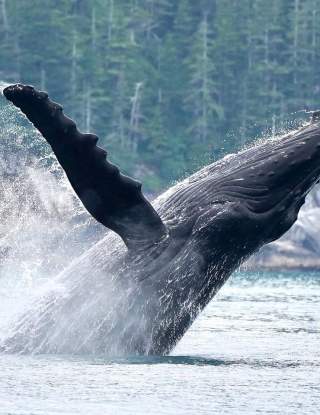Whale Watching
A wildlife cruise through Kenai Fjords National Park and Resurrection Bay is one of the best ways to see whales in Alaska. Seward’s captains are experts at spotting and safely navigating near the majestic mammals, offering a unique experience to observe their behavior.
The most common whale sightings near Seward are of Orca (or killer) whales and humpback whales, but you can also spot minke, fin, and gray during certain seasons.
- Humpback Whale - Best viewing time May-August
- Watching a giant humpback whale breaching or showing off its tail is a breathtaking experience. Humpbacks are common near Seward starting in the spring when they start migrating back from Hawaii.
- Orca Whale - Spotted year-round but best viewing time - May to June
- Orca whales don’t follow a migration pattern, and instead can be found where there is food, socialization, and ice coverage. Orcas, or killer whales, are the largest member of the dolphin family and have three main classifications: resident, transient, and offshore.
- We often spot resident orcas near Seward, as they feed on fish. Transient orcas can be spotted, but are less likely since they feed on marine mammals like seals. Offshore orcas feed mostly on sharks in the open ocean and are rarely seen in Seward.
- Each orca has a distinct dorsal fin and unique black and white markings, so if you spot one on your whale watching trip be sure to ask your captain or interpreter if they know the whale’s name!
- Gray Whale - March-May
- Gray whales travel a far way, with the longest migration route of any mammal, with a round-trip migration of over 10,0000 between Baja and the Bering and Chukchi seas. They start their journey in late February, arriving near Seward in the spring.
- Minke Whale - May-September
- Minke sightings aren’t very common since they travel in small pods. They are known for their slow swimming and quiet nature. Spotting an elusive Minke whale is a real treat!
- Fin Whale - May to September
- Fin, or finback, are the second-largest mammals and are among the fastest of all whales, reaching speeds of up to 23 m.p.h. They like to travel alone, but can sometimes be found in small pods.





